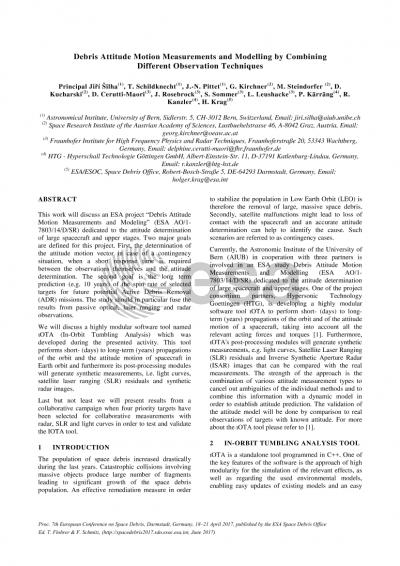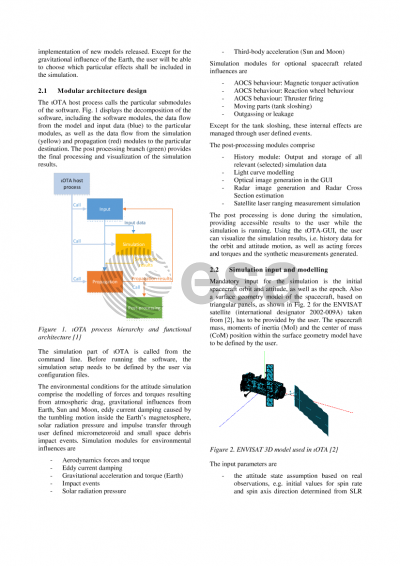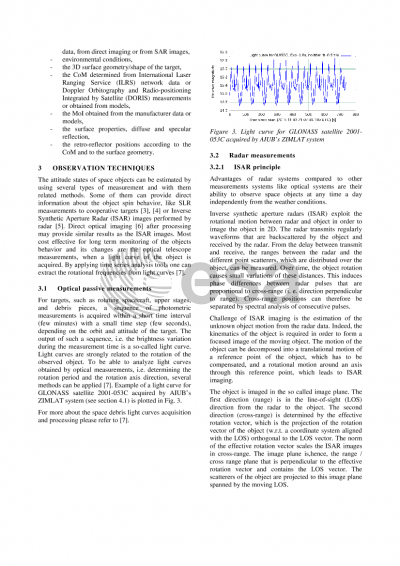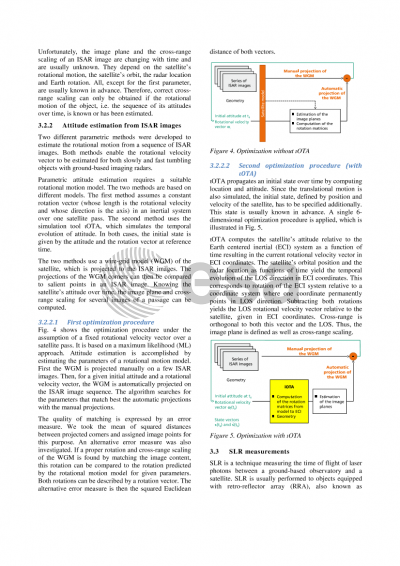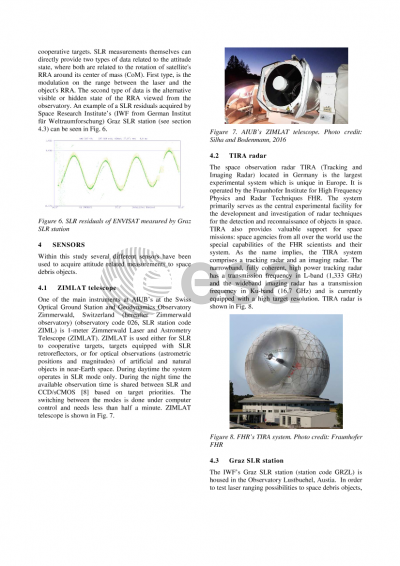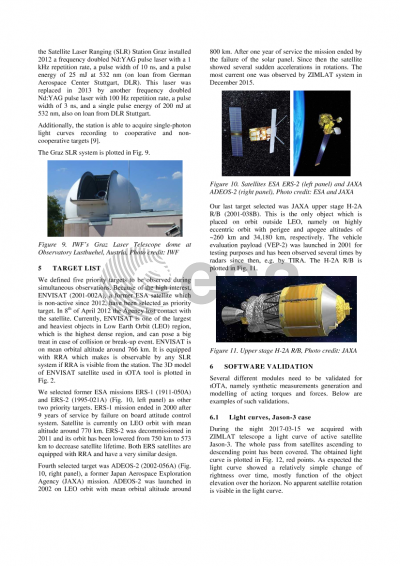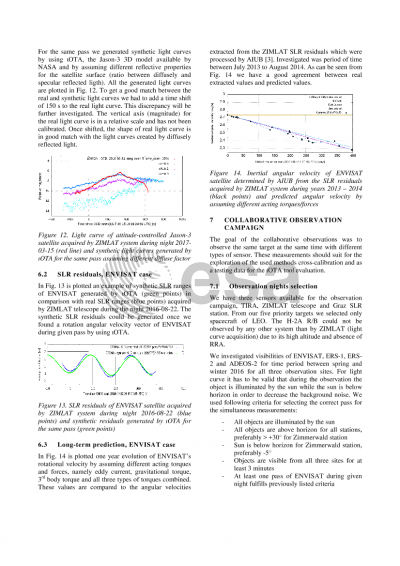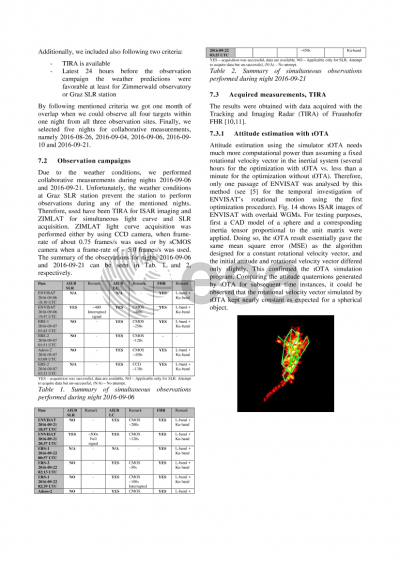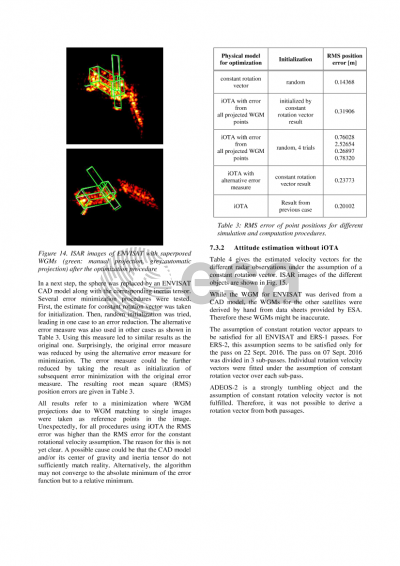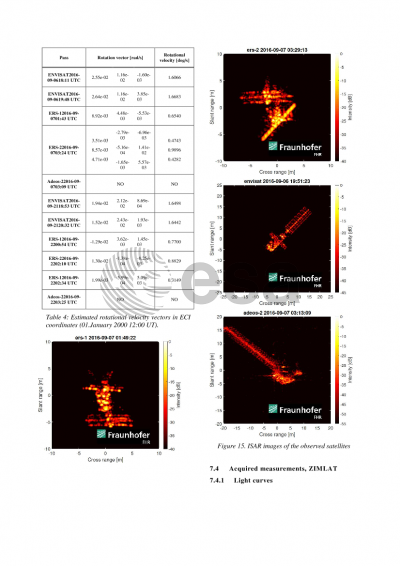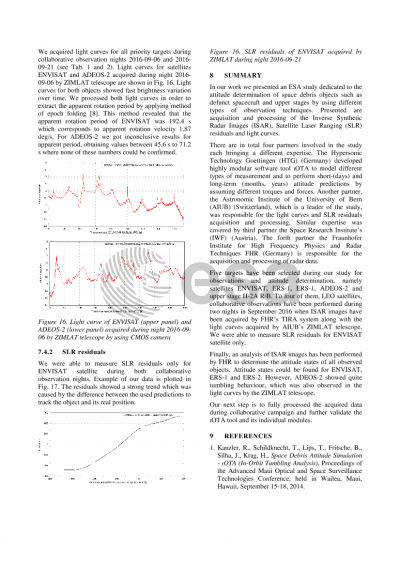Document details
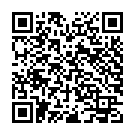
Abstract
Currently, the Astronomic Institute of the University of Bern (AIUB) in cooperation with three partners is involved in the ESA study “Debris Attitude Motion Measurements and Modeling” (ESA AO/1-7803/14/D/SR) dedicated to the attitude determination of large spacecraft and upper stages. Two major goals are defined for this project. First, the determination of the attitude motion vector in case of a contingency situation, when a short response time is required between the observations themselves and the attitude determination. The second goal is the long term prediction (e.g. 10 years) of the spin rate of selected targets for future potential Active Debris Removal (ADR) missions. The study should in particular fuse the results from passive optical, laser ranging and radar observations.
One of the project consortium partners, Hypersonic Technology Göttingen (HTG), is developing a highly modular software tool named IOTA (In-Orbit Tumbling Analysis) to perform short- (days) to long-term (years) propagations of the orbit and the attitude motion of spacecraft in Earth orbit, taking into account all the relevant acting forces and torques. Furthermore, IOTA's post-processing modules will generate synthetic measurements, i.e. light curves, satellite laser ranging (SLR) residuals and synthetic radar images. The validation of the attitude model will be done by cross-calibrating these different types of measurements.
Within the study, five priority targets have been selected for collaborative measurements with all three techniques in order to test and validate the IOTA tool. Four from these targets are defunct, Low Earth Orbit (LEO) satellites equipped with retro-reflectors which were used for the SLR observations during their operational lifetime. The fifth target is an upper stage situated on a highly eccentric orbit.
The paper will describe the project goals and present the results from the observation campaigns and the modeling with the IOTA tool. The paper will specifically focus on the results acquired by the ZIMLAT telescope of the Swiss Optical Ground Station and Geodynamics Observatory Zimmerwald, Switzerland and on the results acquired with the TIRA (Tracking and Imaging Radar) system of Fraunhofer FHR, Germany.
Preview
